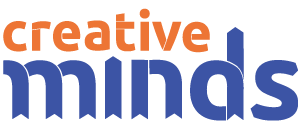Article re-printed with kind permission from Disability Arts Online: http://www.disabilityartsonline.org.uk/creative-minds-further-questions
By Kristina Veasey
The Creative Minds event held in Brighton on Monday 10th March was full to capacity with a good mix of delegates from different roles and organisations. The work was impressive presenting visual art, performance and films that were full of life. Creative Minds was well organised with plenty of activity and scope for discussion and sharing of practice and thought. The speakers were engaging, their presentations witty, and their messages strong. So to add to the debate I want to ask ‘What as a practitioner are you going to do now?’
It is easy to leave a conference in excited chatter talking about how interesting it all was, and how great the speakers were, only to return to our work space and carry on as before. This event was billed as a way to raise issues, and start discussions. But having listened to the artists throughout the day, I think they already have a very clear idea of what they want: choice, control and opportunities. What they are asking for is the support to make it happen.
In any field, unless we know what is out there we can’t make an informed choice or push ourselves or our ambitions. I spoke with several practitioners from small organisations that had successfully operated for many years. What they do seems to work and suits everyone involved; artists and practitioners alike.
Many artists have stayed in one place for decades. But it’s easy to rest on our laurels. How much do we look beyond the limits of what our organisations offer? As the Rockets pointed out, to progress in new directions you need to have the choice and the opportunity to do so.
Opportunities often cost money and the small organisations I spoke to said there was little time or capacity to apply for funding. Perhaps some partnership working could help with this, either larger organisations with admin teams helping out smaller groups, or smaller groups banding together?
It seems that there is a wealth of small groups out there doing wonderful things but often in isolation. Councils often seem unaware of what is available in their communities and there could be huge benefits from linking up, sharing practice and resources between some of these groups.
The opportunity to collaborate with other artists, to have shared studio space, to experience the work of others was all highlighted as important. Thompson Hall spoke positively of his studio time with Action Space, and the Rocket Artists of their collaborations at Brighton University, but how do we ensure these opportunities are available more widely?
Having a space that feels safe and comfortable to work in is not easy to find. As one practitioner commented, “it’s hard for any artist to find studio space but even harder if you have additional needs and barriers to overcome”. Disabled people’s personal allowances are also being cut making it is harder for disabled artists to get out at all, whether to do their own work or to see the work of others.
It’s not just space and opportunity that’s needed though; we need check that what we are offering is what is wanted. The Oska Bright artists were incredibly strong speakers just bursting with ambition and desperate to discover ways to reach bigger audiences and engage with those in the know.
For Andy Kee having control over his work is important; making decisions and understanding processes. He wants training in more aspects, from how to develop a body of work, to how work is selected for galleries. These were all things I could relate to; frustration and excitement rolled into one. There’s a feeling that if someone could just open the door a bit and show you the ropes, there’d be no stopping you. This is where organisations need to focus their efforts. There are enough online galleries now; the request is for more hands-on development.
Creative Minds came in response to a woman asking disabled artists if they did their art for therapy. Discussions about this amongst practitioners at my table seemed to focus on the why the artist made the work, what they got from doing it, and the terminology of therapy.
But the issue isn’t really about whether it is therapy or not. The point is if they hadn’t been disabled she wouldn’t have asked the question. There is an assumption that the disabled artist has no ambition, and possibly no talent; that they wouldn’t be doing it if they weren’t disabled. This stereo-typing is not uncommon and is illustrated by this quote, left by a venue programmer on the comment board at the CM event.
“Art produced by learning disabled people isn’t of a high quality, generally.”
This sweeping statement was not backed up with any specifics or reasoning and shows just how far we still have to go. Still it has started quite an engaging discussion thread which you can read where it is posted on the Creative Minds website.
If nothing else this event has surely opened up debate. But I hope it has done more than just that and will result in real action, with people acting on what they’ve heard.
So I’ll ask the question again: ‘What as a practitioner are you going to do now?’

For me, being able to make Art with all kinds of people and all kinds of place…is Ace ….As the Arts develop So do The people